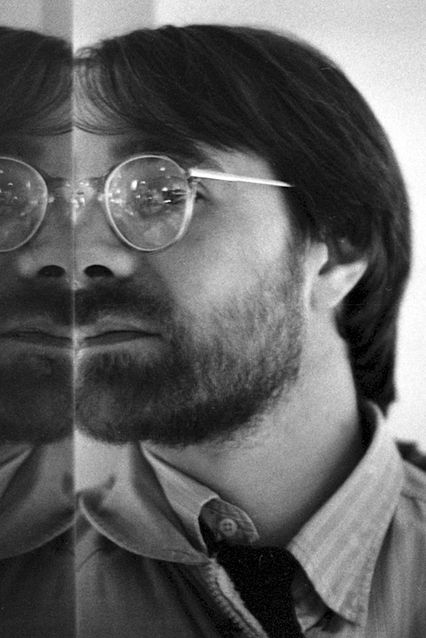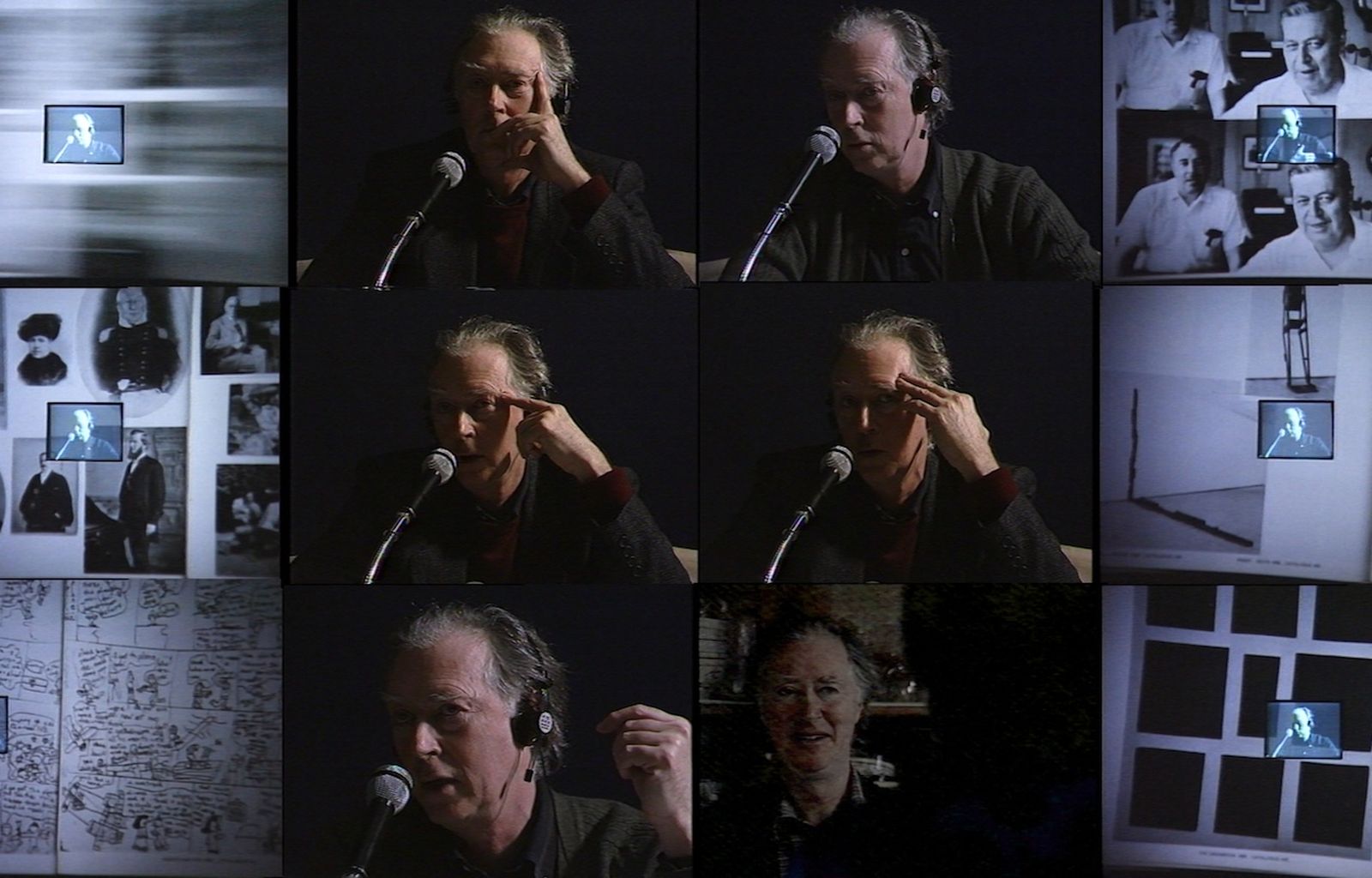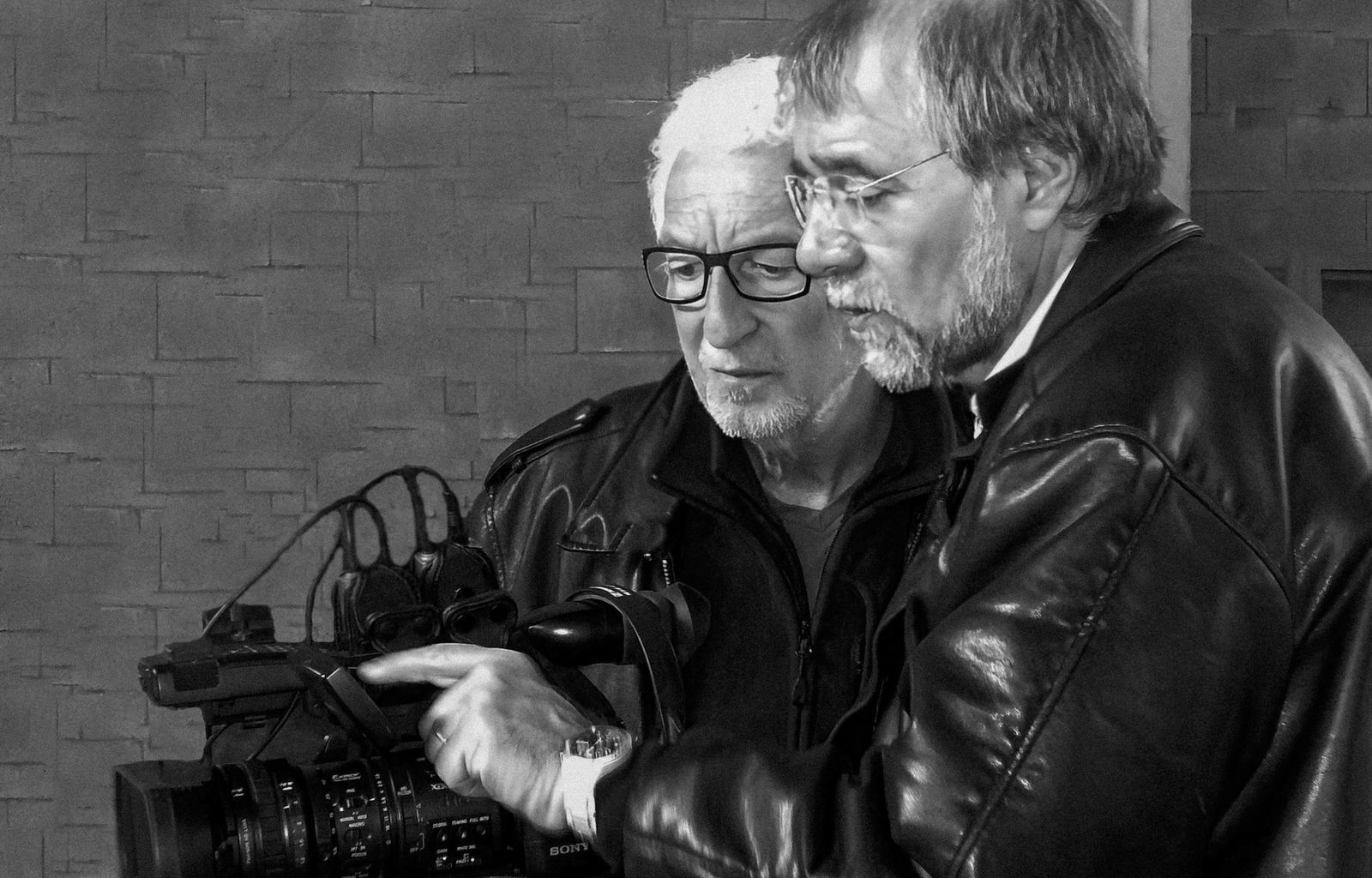The movie is a re-release of the video that won the Silver Seagull at the 1986 Festival Anteprima in Bellaria. Shot in Turin on March 16-23, 1986, on the occasion of the retrospective dedicated to Michael Snow at Turin's Festival Cinema Giovani, the movie is divided into two parts. In the first part, Snow retraces his artistic career as he comments on his movies (clips of which are shown), while in the second part, the filmmakers try their hand at a “Snow-like” improvisation, recorded without interruptions (and then re-elaborated as they improvise in real time) during an informal meeting with the artist and his companion Peggy Gale,with the participation of guests from the worlds of music and film.
37 years later, the two directors have made a digital and subtitled version of the movie, and have added another tribute to the artist: in the second part of the movie, words and letters are extracted from the participants' dialogues and fill the screen, Snow-style.
Biography
film director

Marco Di Castri
Marco Di Castri (Milan, 1952) fuses his interest in cinema with a special focus on the world of contemporary art. In 1984 this led him to make extensive use of live-action shooting in artistic settings. This experience evolved into the project named Cataloga - a publishing house specialized in video-catalogues about artists, exhibitions and museum. Between 1985 and 1992 this project allowed him to work with internationally famous artists as well as to make the first video-catalogue in Europe, for the Centre C. Pompidou, in 1988. From 1992 to 1996 he worked freelance as director and cinematographer and continued his musical activity with the group Dedalus. Complete retrospectives of the Cataloga films were presented at the Musée National d'Art Moderne (Paris, 1994) and at the Festival of Art Film (Asolo, 1996).
FILMOGRAFIA
Notes sur Jean Rouch (1985), Enigma (1986), Now I Know Snow (co-regia Gianfranco Barberi, 1986), Joseph Beuys Olivestones (co-regia Gianfranco Barberi, 1986), Acta Sanctorum (1987), L'abito della Rivoluzione (co-regia Gianfranco Barberi, 1987), Daniel Buren: del colore, dell'architettura (co-regia Gianfranco Barberi, 1988), Michelangelo Pistoletto: I Have a Mirror (co-regia Gianfranco Barberi, 1988), Tinguely par Jeann Tinguely (co-regia Gianfranco Barberi, 1988), Magiciens de la terre (co-regia Gianfranco Barberi, 1989), Donald Jud al Castello di Rivoli (co-regia Gianfranco Barberi, 1990), Claudio Parmiggiani: una scultura (co-regia Gianfranco Barberi, 1991), Scalabrun (1995), La vita in faccia (1995), Ugo Nespolo in pillole (1996).

Gianfranco Barberi
Gianfranco Barberi (Turin, 1944) comes out in the 60's in the underground cinema in Turin with his first super8 at the festival New American Cinema. He is one of the founders of New Italian Cinema. From 1969 until 1978 he lives in Rome and works as scriptwriter for cinema and TV. The meeting with Mario Bava starts a real sodality: together they write several subjects and screenplays, like Ecologia per un delitto (1971) and Shock (1977). Back in Turin, in 1980 he makes several documentaries with social themes for the city Council and RAI Tre. From 1984 until 1993, together with Marco Di Castri, he founds the production company Cataloga and makes many documentaries on contemporary art. From 1999 until 2002 he has been the head organizer of the Doc competition for the Turin Film Festival
FILMOGRAFIA
Turchia, storia di un popolo oppresso (doc., 1976), Memorie del presente (1978), Ma non saremo che noi stessi ancora (doc. 1980), L'ombra del giorno (1982), Ouverture (doc., 1984), Now I Know Snow (doc., 1986), Joseph Beuys. A New Idea of Art (doc., 1987), Claes Oldenburg. Il corso del coltello (doc., 1987), Standing Sculpture (doc., 1988), L'abito della rivoluzione (doc., 1988), Michelangelo Pistoletto. I Have a Mirror, You Have a Mirror (doc., 1988), Donald Judd a Rivoli (doc., 1988), Daniel Buren. Del colore dell'architettura (doc., 1988), Jean Tiguely (doc., 1988), Jannis Kounellis. Bisogna avere una certezza immobile come una stella (doc., 1989), Dal cavalletto alla città. Arte Russa e Sovietica (doc., 1989), Magiciens de la Terre (doc., 1989), Mario Merz. Terra elevata (doc., 1990), Claudio Parmiggiani. Una scultura (doc., 1991), Scalabrun (1995), Felice Casorati. Conversazioni (doc., 1996), Christo. Coprire per riscoprire (doc., video, 1998), In viaggio con l'arte di Luigi Mainolfi (doc., 1999), Ritratto di un amico (mm, 2000), Marco Gastini: la mano aperta della pittura (doc., 2001), Mimmo Jodice: lo sguardo della mente (doc., 2001), Vincenzo Foppa, un protagonista del Rinascimento (doc., 2002), Requiem (doc., 2003).
Declaration
film director
“But there is a fundamental movie that showed us the importance of the electronic language: Now I know Snow, from 1986. There are big new elements compared to Ouverture, from two years before. The electronic effect came into play forcefully, not only during the editing phase. Our encounter with Michael Snow is what gave us this idea. He is a great artist, an experimenter, a researcher of visual and audio languages. We made the movie Snow on a shoestring: we didn't have any money. Marco and I invented and built equipment that was inspired by optical effects in film, rather than by video mixers.” (G. Barberi, in P. Scremin, edited by, Gianfranco Barberi and Marco Di Castri. Quando il video incontra il cinema, Antenna Cinema Arte, XXVIII International Festival of Films on Art, Treviso, 1996).



